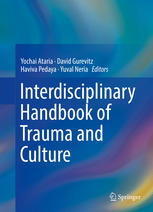

Most ebook files are in PDF format, so you can easily read them using various software such as Foxit Reader or directly on the Google Chrome browser.
Some ebook files are released by publishers in other formats such as .awz, .mobi, .epub, .fb2, etc. You may need to install specific software to read these formats on mobile/PC, such as Calibre.
Please read the tutorial at this link: https://ebookbell.com/faq
We offer FREE conversion to the popular formats you request; however, this may take some time. Therefore, right after payment, please email us, and we will try to provide the service as quickly as possible.
For some exceptional file formats or broken links (if any), please refrain from opening any disputes. Instead, email us first, and we will try to assist within a maximum of 6 hours.
EbookBell Team

4.0
96 reviewsThis lofty volume analyzes a circular cultural relationship: not only how trauma is reflected in cultural processes and products, but also how trauma itself acts as a critical shaper of literature, the visual and performing arts, architecture, and religion and mythmaking. The political power of trauma is seen through US, Israeli, and Japanese art forms as they reflect varied roles of perpetrator, victim, and witness. Traumatic complexities are traced from spirituality to movement, philosophy to trauma theory. And essays on authors such as Kafka, Plath, and Cormac McCarthy examine how narrative can blur the boundaries of personal and collective experience.
Among the topics covered:
This volume appeals to multiple readerships including researchers and clinicians, sociologists, anthropologists, historians, and media researchers.